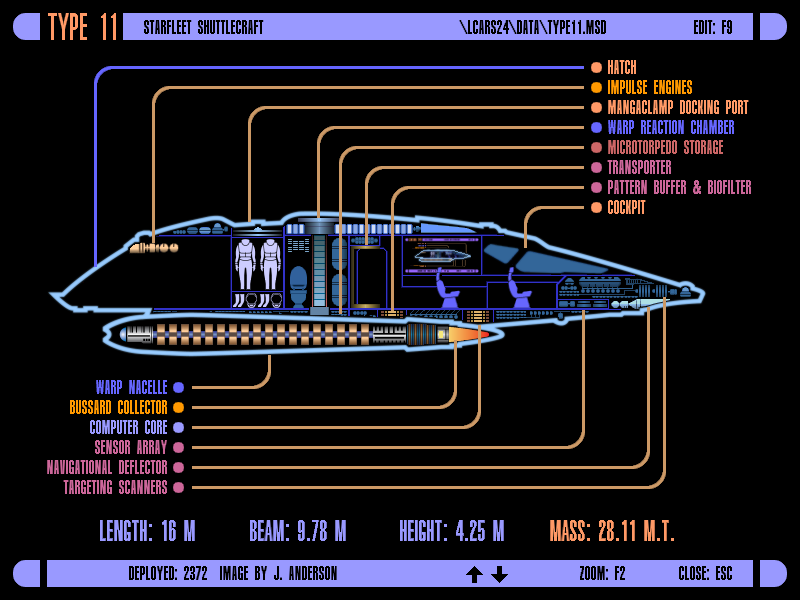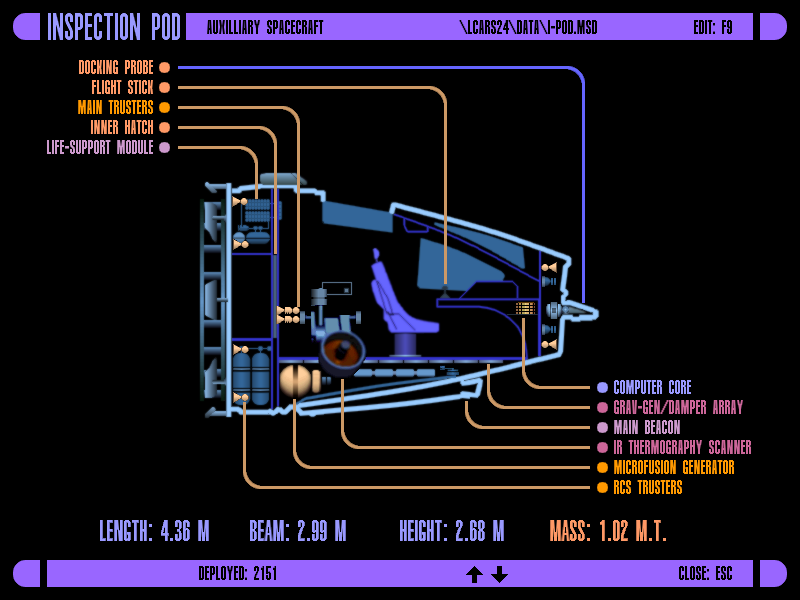I still haven't gotten around to finishing the inspection pod, but this one looks done to me:


Last edited:

 . I'm wondering if you're planning on doing some further alien designs? I've enjoyed those the most- particularly given that it's so rare to see anyone work on non-Federation craft.
. I'm wondering if you're planning on doing some further alien designs? I've enjoyed those the most- particularly given that it's so rare to see anyone work on non-Federation craft.
That's quite a challenge - the front cockpit lacks an entry door altogether (roof or floor hatches notwithstanding), while the aft door doesn't seem to lead to anywhere interesting...
I guess the best approach would be to do something similar to what Tobias Weimann did with the Danube interiors once. He figured out that the blue-green computer panel just behind the transporters (in the earliest versions of the set) could be interpreted as a rail-mounted CPU column of some sort, something our heroes could push back and thus access the amidships and aft regions of their craft. Similarly, the wall behind the transporters of Type 11 might have to open up somehow to turn this nonsensical design into a practically workable one.
Does Type 11 really have a torpedo launcher? The only thing we ever see it fire is the (aft) tetryon pulse, which isn't associated with torpedo launchers as far as we know.
As regards the Sydney class, I like the idea of that big aft deck with a row of aft-facing space windows - although those windows were probably supposed to be the impulse engines of the craft...
Timo Saloniemi

Why is the docking probe in the FRONT of the capsule when the thing already has an airlock and an APAS-style docking probe is on the BACK of the craft?


We use essential cookies to make this site work, and optional cookies to enhance your experience.
